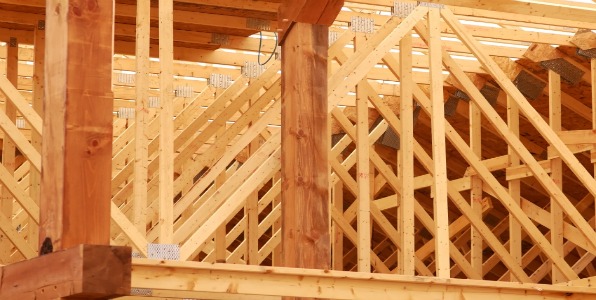
More homes were built in the first month of January, starting 2018 on an optimistic note for economic growth and real estate prices.
The number of new housing units being constructed rose 9.7% in January from the previous month to an annual rate of 1.326 million, the U.S. Census Bureau/ U.S. Department of Commerce announced February 16. This marked the third increase in four months.
The report indicated that builders are also planning to increase construction activity later this year. Permits to build increased 7.4% in January to an annual pace of 1.396 million.
Even with this optimistic trend, economists say the housing construction growth will continue to be gradual. New-home construction levels are likely to remain well below normal levels for some time, according to Robert Frick, corporate economist with Navy Federal Credit Union.
“This is a generational issue because we’ve fallen so far behind in supply that we’re still playing catch up,” said Frick in a recent statement to Realtor.com. “We’ve still got years to go before we see these numbers improve to normal levels.”
Worth noting in the latest report, housing starts rose despite harsh frigid weather in January. However, also worth noting is the fact that housing starts data is typically volatile and subject to revision. The margin of error for the January increase of 9.7% was 16.8 percentage points, give or take.
Another key aspect of January’s housing starts gain is the fact that it appears to have been largely driven by multifamily construction, i.e. apartment homes. Data on these housing types tend to be especially volatile and will likely not remain at that level, according to Realtor.com.
Apartment construction leapt 24% in January, while construction of single-family homes only saw a 3.7% gain. Additionally, permits for homes with 5 for more units increased more than 25%, while permits for building single-family homes actually declined 1.7%.
Looking at the long-term data, construction for new homes is on the rise. Total starts rose 7.3% in the 12 months through January 2018, while single-family starts rose 7.6% during that time.
According to Realtor.com’s report, January’s figures may reflect early signs of the impact of the tax bill passed in December 2017. This bill, according to the report, reduced incentives for homeownership that can be especially important in higher-priced markets. The bill also eliminated individual tax rates and greatly reduced the corporate tax to 21% from 35%. The changes to the tax code could help boost builder margins by 10% to 15%, which might encourage them to take on more building projects.
“Home builders are able to be a little more aggressive in terms of getting out there and building homes,” said Tendayi Kapfidze, chief economist at LendingTree, to Realtor.com.
 Equal Housing Lender | © 2024 Schmidt Mortgage Company / Click n’ Close Inc.
Equal Housing Lender | © 2024 Schmidt Mortgage Company / Click n’ Close Inc.